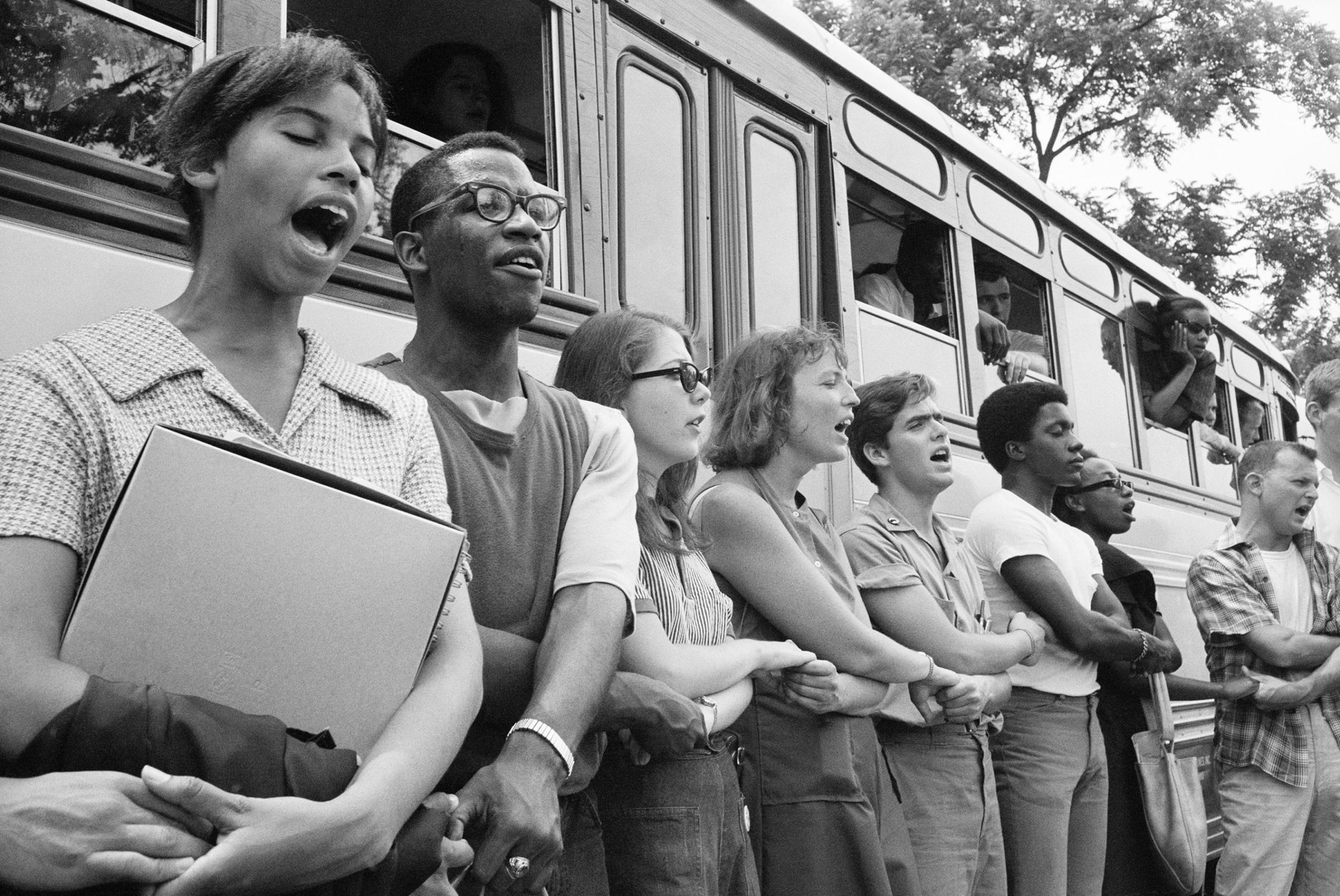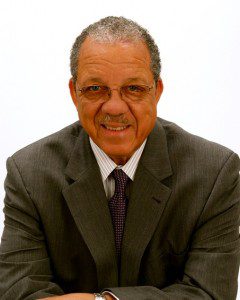Preserving the voices of change

 Dave Dennis was there. He rode on the first Freedom Bus from Montgomery, Ala. to Jackson, Miss. in 1961 as part of an attempt to desegregate the interstate bus system. He worked alongside Dr. Bob Moses and Medgar Evers.
Dave Dennis was there. He rode on the first Freedom Bus from Montgomery, Ala. to Jackson, Miss. in 1961 as part of an attempt to desegregate the interstate bus system. He worked alongside Dr. Bob Moses and Medgar Evers.
This summer, the prominent civil rights activist also spent an evening sharing stories with communication studies professor Sean O’Rourke and Furman students Adair Bramlett ’15 and Sarah Stevens ’15 as part of the 50th anniversary of the Freedom Summer in Jackson, Miss.
“Amid bravery was a high human cost. Our work was met with deadly violence, beatings, arrests, bombings and arson, economic terrorism, as well as a toll emotionally,” Dennis has said.
In the summer of 1964, Dr. Moses organized more than 1,000 student volunteers to assist NAACP leaders and others in ending segregation in Mississippi. Their efforts were celebrated during the Mississippi Freedom Summer 50th Anniversary Conference, hosted by the Veterans of the Mississippi Civil Rights Movement, Mississippi State Conference NAACP, One Voice, and Tougaloo College.
As the cameras rolled five decades later, Dennis shared new details about the eulogy he gave at James Chaney’s funeral with his Furman friends. Chaney was one of three American civil rights workers who were murdered near Philadelphia, Miss., during the Freedom Summer by members of the Ku Klux Klan. As Dennis shared the painful thoughts he experienced during the eulogy, it brought new and deeper meaning to the story he has told in previous documentaries, O’Rourke said.
“History is not by any means complete,” said O’Rourke. “There are stories, voices we haven’t heard.”
It’s a mindset O’Rourke has brought to the book he is editing with Communication Professor Lesli Pace of the University of Louisiana at Monroe, Like Wildfire: The Rhetoric of the Civil Rights Sit-Ins. The book, which is currently under review by the University of South Carolina Press, focuses on new stories from 23 sit-ins over 35 years, including Eleanor Roosevelt’s “Sit-Between” in Birmingham, Ala. in 1938 and local sit-ins in 1960 at Sterling High School in Greenville.
“The sit-ins of the Civil Rights Movement were some of the most extraordinary acts of protest in an age marked by protest,” O’Rourke said. “By occupying ‘whites only’ lunch counters, libraries, beaches, swimming pools, skating rinks, parks and churches, young men and women put their bodies on the line, fully aware that their actions would almost inevitably incite savage, violent responses from entrenched and increasingly desperate white segregationists.”
With thousands participating in sit-ins over the decades, local and regional historians are still scrambling to piece together the details of sit-ins before they are lost.
To supplement their research, O’Rourke and Pace are planning an open-access, online database that will provide both students and scholars with sit-in information by location, including photographs and possibly video. Many of the listings will be those not currently mentioned in scholarly or popular literature, O’Rourke said.
The interview with Dennis and other civil rights leaders from the Freedom Summer had a tremendous impact on Stevens, a communication studies and earth and environmental sciences major from Greenville. “I met them personally. I shook their hands. I knew their names,” she said.
Bramlett, a communication studies and health sciences major from Columbia, became interested in social activism after studying the green movement, gay rights, and women’s rights in O’Rourke’s May by the Bay May X class. She and Stevens have been assisting O’Rourke with research as part of the Furman Advantage program.
“As I learned about social activism, I began to discover the power of my voice and my desire to be creative in evoking change,” said Bramlett. “While I do not foresee myself doing something as heroic in my lifetime, I wish to contribute by making these stories and documents of sit-ins an accessible part of history.”
It’s a project that is “both a testament of history as well as a collaborative learning experience,” Bramlett said.